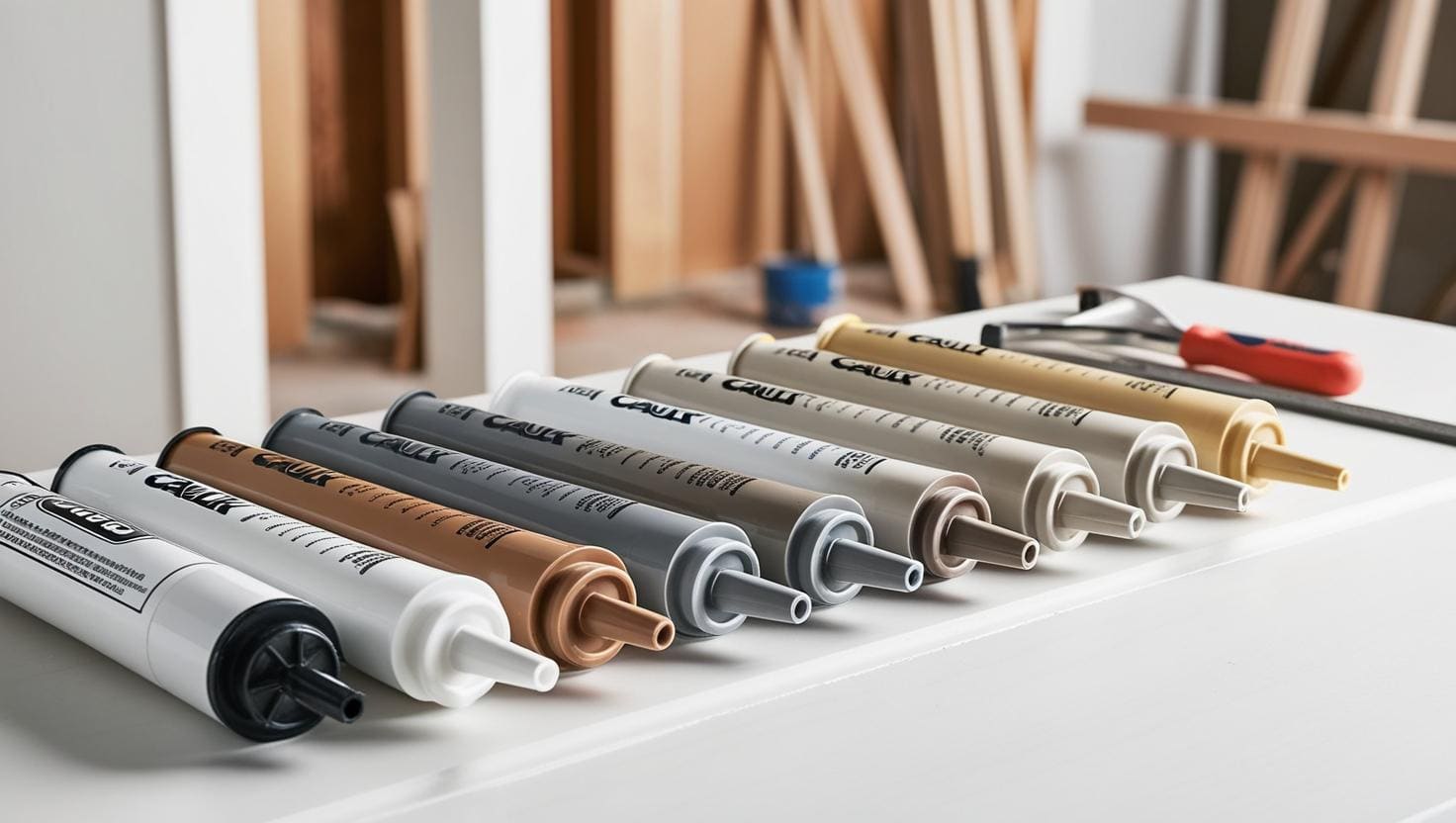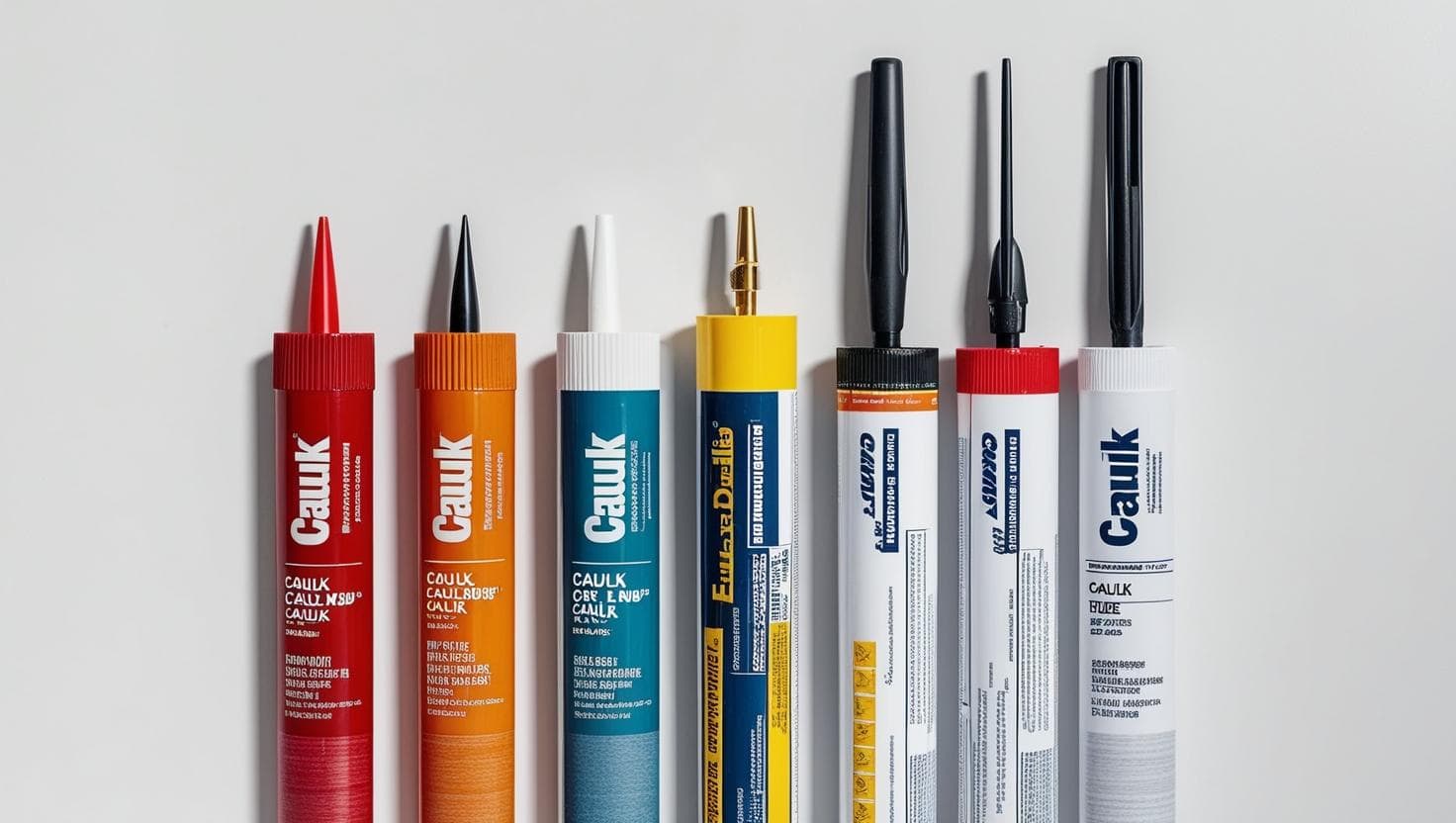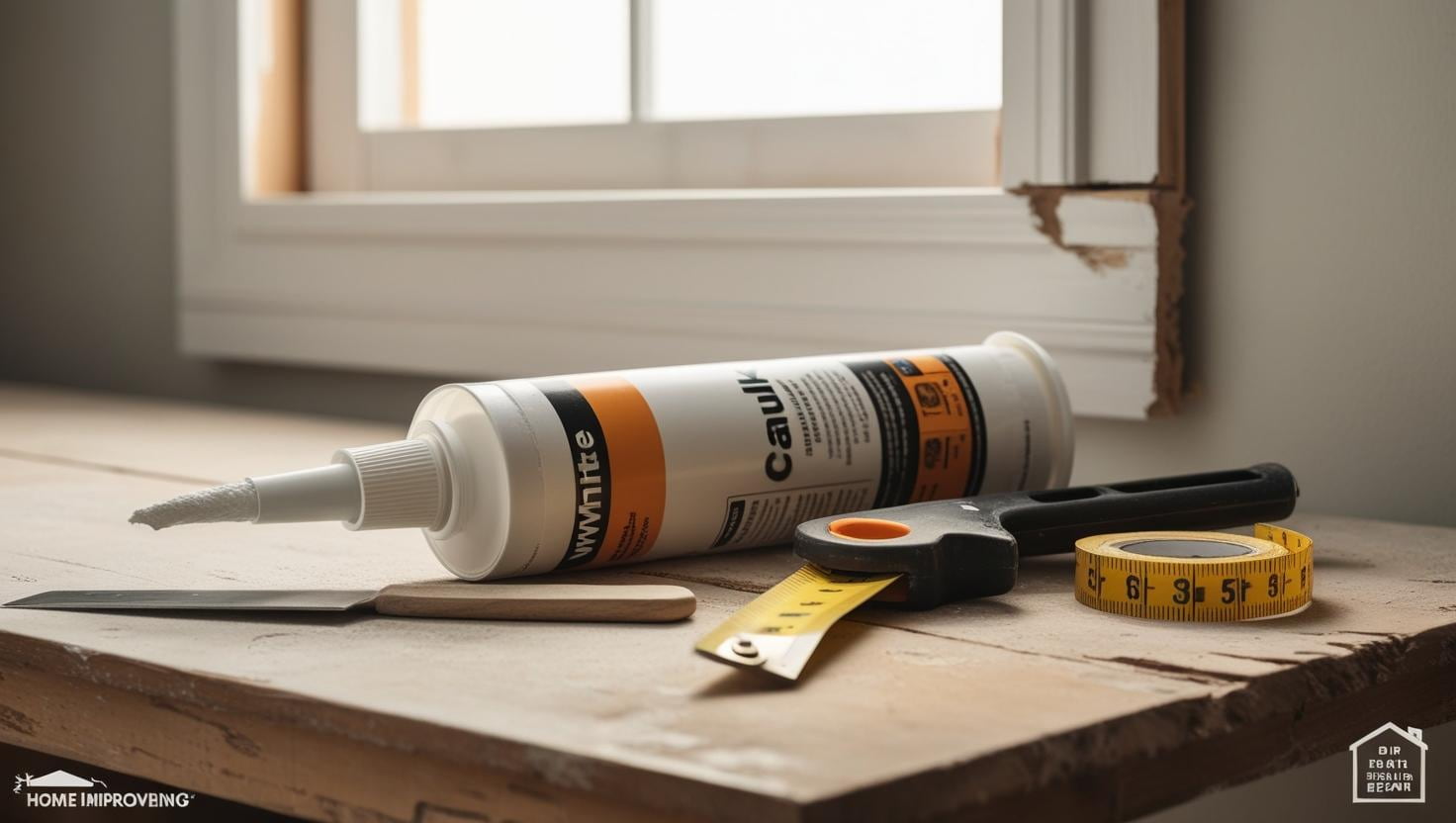Introduction
Caulk is a handy material used in homes for sealing gaps, preventing leaks, and improving aesthetics.
Whether you’re sealing a bathtub, fixing a window frame, or working on a DIY project, one question always pops up: how long does caulk take to dry? The drying time of caulk depends on several factors like the type of caulk, environmental conditions, and application techniques.
In this article, we’ll break down everything you need to know about caulk drying times, curing processes, and tips to get the best results.
What is Caulk and Why Does Drying Time Matter?

Caulk is a flexible sealant used to fill cracks, gaps, and joints in various surfaces like wood, tile, glass, or metal. It’s commonly used in bathrooms, kitchens, and windows to prevent water damage, air leaks, or to create a polished look. Knowing how long does caulk take to dry is crucial because it affects when you can use the sealed area, paint over it, or expose it to water.
If you use the area too soon, the caulk might not set properly, leading to cracks, leaks, or a messy finish. Understanding drying and curing times helps you plan your project and avoid costly mistakes.
The Difference Between Drying and Curing
Before diving into how long does caulk take to dry, it’s important to understand the difference between drying and curing, as these terms are often confused:
- Drying: This is when the caulk’s surface becomes tack-free or dry to the touch. It’s no longer sticky, but the caulk may not be fully set.
- Curing: This is the process where the caulk fully hardens and reaches its maximum strength. Curing takes longer than drying and is critical for durability.
For example, silicone caulk might feel dry in a few hours but could take days to fully cure. Knowing these stages helps you decide when it’s safe to paint, shower, or expose the caulk to stress.
Types of Caulk and Their Drying Times

The drying time of caulk varies depending on its type. Here’s a breakdown of common caulk types and how long does caulk take to dry for each:
1. Silicone Caulk
Silicone caulk is popular for its flexibility and water resistance, making it ideal for bathrooms and kitchens.
- Drying Time: 30 minutes to 2 hours to become tack-free.
- Curing Time: 24 to 48 hours for full curing, depending on humidity and thickness.
- Best For: Wet areas like showers, sinks, and outdoor applications.
- Tip: Silicone caulk doesn’t accept paint well, so choose a paintable version if needed.
2. Acrylic Latex Caulk
Acrylic latex caulk is easy to apply, paintable, and great for indoor projects like baseboards or window frames.
- Drying Time: 2 to 4 hours to become tack-free.
- Curing Time: 7 to 14 days for complete curing.
- Best For: Interior gaps, drywall, or wood surfaces.
- Tip: Clean up with water before it dries, as it’s harder to remove once set.
3. Polyurethane Caulk
Polyurethane caulk is durable and flexible, often used for outdoor projects or heavy-duty sealing.
- Drying Time: 4 to 8 hours to become tack-free.
- Curing Time: 7 to 10 days for full curing.
- Best For: Exterior joints, concrete, or masonry.
- Tip: Apply in thin layers for faster drying.
4. Butyl Rubber Caulk
Butyl rubber caulk is known for its strong adhesion and is often used for HVAC or roofing projects.
- Drying Time: 12 to 24 hours to become tack-free.
- Curing Time: Up to 14 days for full curing.
- Best For: Metal surfaces, gutters, or ductwork.
- Tip: Ensure proper ventilation, as it can have a strong odor.
5. Hybrid Caulk
Hybrid caulks combine properties of silicone and acrylic for versatility and durability.
- Drying Time: 1 to 3 hours to become tack-free.
- Curing Time: 3 to 7 days for full curing.
- Best For: Multi-surface applications, both indoor and outdoor.
- Tip: Check the product label for specific drying instructions.
Each type of caulk has unique properties, so choosing the right one for your project is key to determining how long does caulk take to dry.
Factors That Affect Caulk Drying Time
Several factors influence how long does caulk take to dry. Understanding these can help you plan your project and avoid delays:
1. Humidity Levels
High humidity slows drying because moisture in the air prevents the caulk from setting quickly. For example, silicone caulk cures faster in humid conditions, while acrylic caulk dries faster in low humidity.
- Tip: Use a dehumidifier or fan in humid environments to speed up drying.
2. Temperature
Caulk dries faster in warmer temperatures (around 70°F to 80°F). Cold temperatures can significantly extend drying times.
- Tip: Avoid applying caulk below 40°F unless the product is rated for low temperatures.
3. Ventilation
Good airflow helps caulk dry faster by allowing moisture to evaporate. Poor ventilation, like in a small bathroom, can double drying time.
- Tip: Open windows or use a fan to improve air circulation.
4. Thickness of Application
Thicker beads of caulk take longer to dry and cure than thin layers. Applying too much caulk at once can lead to uneven drying.
- Tip: Apply caulk in thin, even layers and smooth it out with a caulk tool or finger.
5. Surface Type
Porous surfaces like wood absorb moisture from the caulk, slowing drying. Non-porous surfaces like glass allow faster drying.
- Tip: Prime porous surfaces before caulking to improve adhesion and drying.
How to Tell When Caulk is Dry
Wondering how long does caulk take to dry in your specific project? Here’s how to check if it’s ready:
- Touch Test: Lightly touch the caulk with a clean finger. If it’s tack-free (not sticky), it’s dry on the surface.
- Visual Inspection: Look for a uniform color and texture. Wet caulk often appears darker or shinier.
- Smell Test: If the caulk still has a strong chemical odor, it may not be fully cured.
- Press Test: Gently press the caulk with a tool. If it feels firm and doesn’t deform, it’s likely cured.
Always check the manufacturer’s instructions for specific drying and curing times, as formulations vary.
Tips to Speed Up Caulk Drying Time
If you’re in a hurry and wondering how long does caulk take to dry, these tips can help speed up the process:
- Improve Ventilation: Use fans or open windows to increase airflow.
- Lower Humidity: Run a dehumidifier in damp areas like bathrooms.
- Apply Thin Layers: Use a caulk gun for precise, thin beads.
- Use a Heat Source: A space heater (set at a safe distance) can raise the temperature and speed drying.
- Choose Fast-Drying Caulk: Some products are designed for quicker drying—check the label.
For example, a 2023 study by the Home Improvement Research Institute found that proper ventilation can reduce caulk drying time by up to 30%. Simple steps like these can make a big difference.
Common Mistakes That Delay Caulk Drying
Avoid these pitfalls to ensure your caulk dries on time:
- Applying Too Much Caulk: Excess caulk takes longer to dry and may crack.
- Poor Surface Preparation: Dirty or wet surfaces prevent proper adhesion and slow drying.
- Ignoring Weather Conditions: Applying caulk in high humidity or cold temperatures can double drying time.
- Using the Wrong Caulk: Choosing a caulk not suited for the surface or environment can lead to poor results.
For instance, using silicone caulk on a painted surface without checking if it’s paintable can lead to peeling or extended drying times.
When Can You Paint Over Caulk?
Painting over caulk is a common step in many projects, but timing is critical. Here’s a guide based on caulk type:
- Acrylic Latex Caulk: Paintable after 2 to 4 hours when tack-free. For best results, wait 24 hours.
- Silicone Caulk: Most silicone caulks aren’t paintable unless labeled as such. Check the product details.
- Hybrid Caulk: Typically paintable after 1 to 3 hours, but confirm with the manufacturer.
Always use a high-quality primer and paint to ensure adhesion. Painting too soon can cause the paint to crack or peel.
When Can You Expose Caulk to Water?
If you’re sealing a bathtub or sink, knowing how long does caulk take to dry before it can handle water is essential. Here’s a quick guide:
- Silicone Caulk: Safe for water exposure after 24 to 48 hours.
- Acrylic Latex Caulk: Wait at least 48 hours, as it’s less water-resistant until fully cured.
- Polyurethane Caulk: Typically water-ready after 3 to 7 days.
To be safe, wait until the caulk is fully cured before prolonged water exposure, especially in high-moisture areas like showers.
Real-Life Example: Caulking a Bathroom
Let’s say you’re caulking around a bathtub. You choose silicone caulk for its water resistance. You apply it on a warm day (75°F) with good ventilation. The caulk feels tack-free in about 1 hour, so you know it’s surface-dry. However, you wait 24 hours before using the shower to ensure it’s fully cured. By following the product instructions and maintaining good airflow, you avoid issues like mold or leaks.
This example shows why understanding how long does caulk take to dry is critical for a successful project.
Conclusion
Understanding how long does caulk take to dry is key to any successful sealing project. Drying times vary based on the type of caulk, environmental conditions, and application techniques. Silicone caulk might be tack-free in an hour, while acrylic latex could take days to fully cure. By choosing the right caulk, preparing surfaces properly, and controlling factors like humidity and ventilation, you can ensure a strong, lasting seal.
Whether you’re a DIY beginner or a seasoned pro, following these tips will help you get professional results. Always check the product label for specific drying and curing times, and don’t rush the process—patience leads to perfection.
FAQ’s
1. Can I speed up caulk drying with a hairdryer?
Yes, but use the cool setting to avoid damaging the caulk. High heat can cause cracking or bubbling.
2. How long does caulk take to dry in cold weather?
Cold temperatures can extend drying times by 50% or more. For example, silicone caulk might take 3 to 4 hours to dry at 40°F instead of 1 to 2 hours at 70°F.
3. Why is my caulk still tacky after 24 hours?
This could be due to high humidity, thick application, or poor ventilation. Check the environment and consider adding airflow.
4. Can I use caulk that’s past its expiration date?
Expired caulk may not dry or cure properly, leading to weak seals. Always check the date before using.






More Stories
How To Style A Coffee Table For Every Home
How to Decorate Your Home for Christmas Like a Pro
15 Easy Steps to Build a DIY Pergola: A Complete Homeowner’s Guide